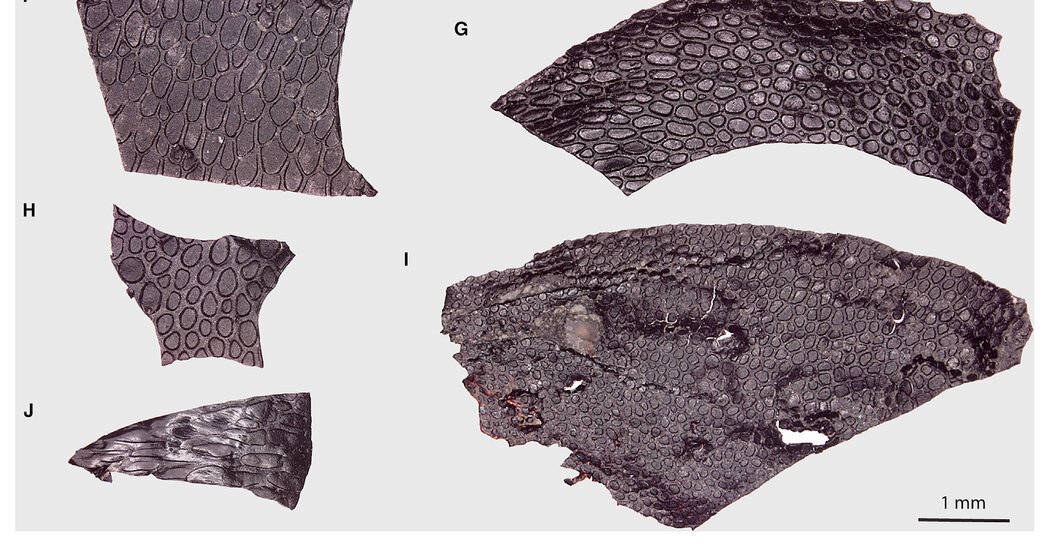Dry, scaly skin may be one of the least fun parts of winter. But in the broad scheme of things, a tough, watertight hide is part of what enabled the ancestors of modern reptiles, birds and mammals to move inland while their thin-skinned amphibian cousins remained close to water.
In a study published Thursday in the journal Current Biology, scientists announced the discovery of the oldest-known piece of fossilized skin. The pebbly scrap, which is no larger than a human fingernail, most likely belonged to an ancient reptile and provides rare insight into the evolution of skin.
The piece of skin is one of countless traces of prehistoric life preserved in the Richards Spur limestone cave system near an oil seep in southwestern Oklahoma. When animals fell into the caves 289 million years ago, the conditions were ideal for preservation: fine clay sediments rapidly buried the bodies, low levels of oxygen in the groundwater slowed the decay process, and hydrocarbons from the oil permeated the tissues and made them less hospitable to bacteria. The tar seeped into the fossils, staining them.
In 2018, Bill May, a retired forensic analyst, shared some tiny flakes from the Richards Spur that he couldn’t identify with Robert Reisz, a paleontologist at the University of Toronto Mississauga.

“The texture of the skin is quite unique and interesting. It really stands out from other fossil material. It’s obviously not bone,” said Ethan Mooney, a master’s student who worked with Dr. Reisz on the paper. If anything, the fossilized tissue bore a striking resemblance to the scaly skin of a crocodile.
A Ph.D. student and another author of the paper, Tea Maho, used a diamond-tipped blade to separate a tiny portion of the skin into hair-thin layers. The outermost layers had hardened structures made of keratin, the protein found in mammalian hair and nails. These hardened structures, or cornifications, are a hallmark of the skin of amniotes — the land-dwelling, backboned animals including reptiles, birds and mammals. Amniotes’ ancestors evolved to be able to live and reproduce outside of the water, unlike their amphibious relatives.
Tough, impermeable skin was a key evolutionary adaptation for amniotes taking over the land, “because in order to survive in terrestrial environments, you want to not dry out,” Mr. Mooney said.
The fossilized skin was found by itself, unattached to bone. However, Richards Spur has yielded countless fossils of a small, lizardlike reptile called Captorhinus aguti. While scientists haven’t found a C. aguti fossil with skin attached to it, they did identify one with remnants of cornifications. Dr. Reisz said that suggests the skin came from the same animal.
Hans Sues, a paleontologist at the National Museum of Natural History who was not involved with the study, said that he was “delighted” by the paper, agreeing that it is “really the earliest fossil example” of skin.
“We have had skin impressions, but here they can actually look at the detailed structure under the microscope as if it were skin they had just harvested from a living animal,” Dr. Sues said. “And that’s a really important discovery.”










